Securing a bike rack is essential to prevent theft and protect your valuable equipment, whether you’re on a quick errand or an extended trip. A properly locked rack not only safeguards your bicycle but also ensures the safety of others by keeping the rack stable and intact during transit.
With a range of bike racks available, such as hitch-mounted, trunk-mounted, and roof-mounted options, each type requires specific locking techniques to maximize security. Understanding how to lock bike rack effectively is crucial for both peace of mind and protecting your investment.
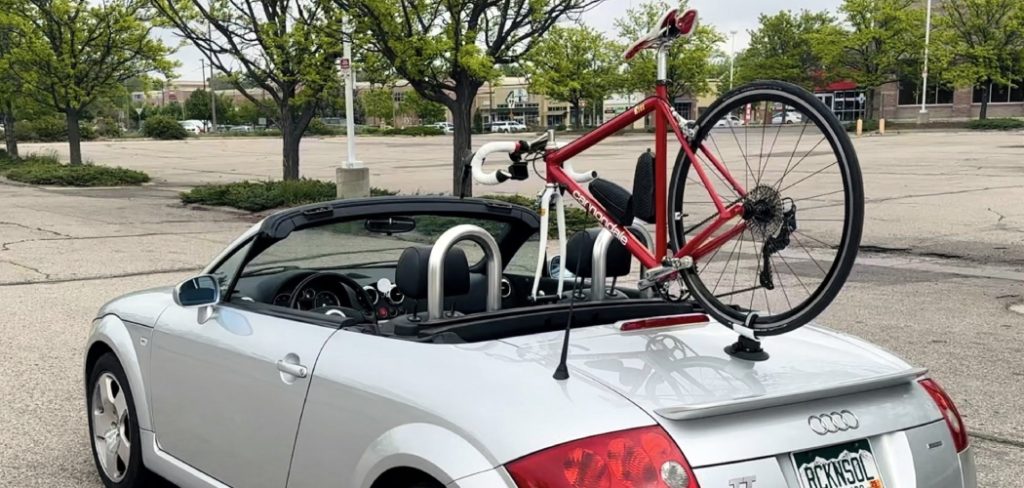
This guide will provide a comprehensive overview of various methods to lock bike racks tailored to the unique needs of each rack type. By following these tips, you can secure your bike and rack confidently, no matter where you go.
Understanding Bike Rack Security
Why Locking Is Essential
Locking your bike rack is vital in safeguarding both your bike and the rack itself from theft. Without proper security measures, thieves can easily remove an unsecured rack, leaving you without transportation and a costly replacement to consider. By ensuring your bike rack is securely locked, you gain peace of mind whether you’re traveling long distances, running errands, or parking temporarily.
Types of Bike Racks
There are three common types of bike racks, each with unique features and security requirements:
- Hitch-Mounted Racks: These attach to the hitch receiver of your vehicle, making them sturdy and ideal for multiple bikes. However, they may be vulnerable to theft if the hitch pin is left unsecured.
- Trunk-Mounted Racks: Designed to strap onto the back of a vehicle, these racks are lightweight and versatile, but their straps and attachment points can be easier targets for tampering.
- Roof-Mounted Racks: Positioned on top of the vehicle, these racks provide excellent stability but can leave your bike exposed if not properly locked.
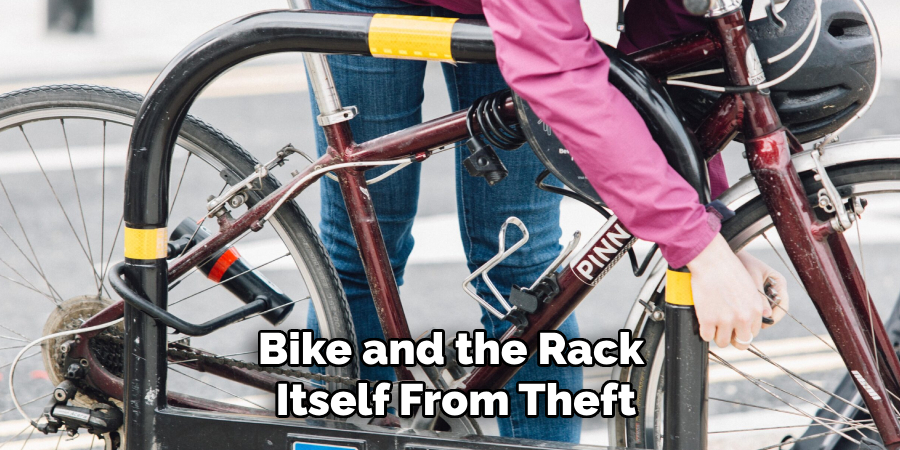
Vulnerabilities
Each type of bike rack has its own weak points. Hitch-mounted racks may have exposed bolts that can be tampered with, trunk-mounted racks often rely on straps that can be cut, and roof-mounted racks might lack proper locking mechanisms for both the rack and the bike. Identifying these vulnerabilities is the first step in addressing them effectively.
Tools and Accessories for Securing Bike Racks
Locking Options
When securing your bike and rack, the right locking tools are essential. Cable locks are a versatile choice, providing flexibility and ease of use, although they may not offer the highest level of security. On the other hand, U-locks are known for their sturdiness and resistance to tampering, making them a reliable option for urban environments.
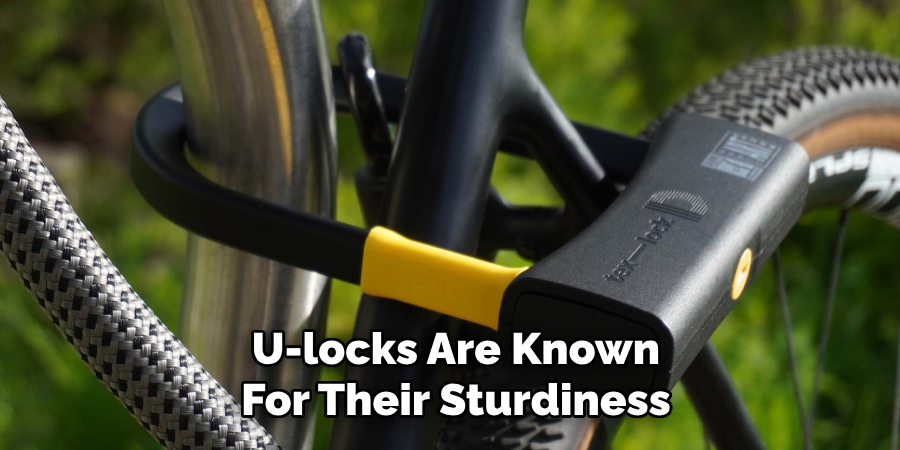
For hitch-mounted racks, hitch pin locks specifically secure the connection point between the rack and your vehicle, reducing the theft risk. Lastly, some bike racks come with integrated locks built into the rack’s design for added convenience, offering an all-in-one solution.
Additional Tools
Beyond locks, other tools can enhance security for your bike rack system. Security straps with metal cores are an excellent deterrent, as they are difficult to cut through compared to traditional straps. Tamper-proof bolts and nuts can replace standard hardware, adding an extra layer of protection against interference. For roof-mounted racks,
locking mechanisms for roof bars ensure that both the rack and the bike remain secure. Combining these tools with proper locking options creates a robust security system, safeguarding your bike and rack even in high-risk areas.
How to Lock Bike Rack: Lock a Hitch-Mounted Bike Rack
Securing a hitch-mounted bike rack is essential to prevent theft and ensure your bikes are safe while traveling. Follow these steps to effectively lock your hitch-mounted bike rack and protect your valuable equipment:
Step 1: Use a Hitch Pin Lock
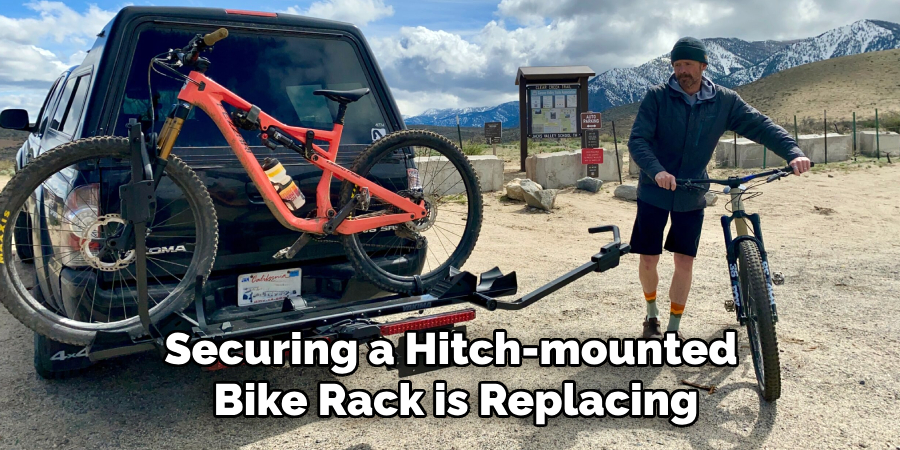
The first step in securing a hitch-mounted bike rack is replacing the standard hitch pin with a locking hitch pin. A hitch pin lock is designed to prevent unauthorized rack removal from your vehicle. To do this, locate the hole where the standard hitch pin connects the rack to the hitch receiver. Remove the standard pin and replace it with the locking pin, ensuring it fits snugly and secures the rack firmly. Once in place, lock the pin using the provided key to deter tampering.
Step 2: Secure the Rack to the Vehicle
It is crucial to firmly attach the bike rack to your vehicle to prevent easy detachment. Most hitch-mounted bike racks have mechanisms to stabilize the connection between the rack and the hitch receiver. Tighten all bolts or knobs provided in your rack’s design to eliminate any slack or movement. Additionally, consider using anti-wobble devices to enhance stability. A properly secured rack not only prevents theft but also ensures the safe transport of your bikes, reducing the risk of accidents while driving.
Step 3: Lock the Bikes to the Rack
With the rack securely attached to your car, the next step is to lock the bikes to the rack itself. Depending on the rack’s design, you can use a U-lock or a heavy-duty cable lock to secure the bike frames to the rack’s structure. Look for locking points such as metal arms or frame holders to create a robust connection. For additional security, thread the lock through critical bike components like wheels and frames to make removal more difficult. This step ensures that the bikes will remain securely attached even if someone attempts to tamper with the rack.
Step 4: Double Check for Security
Before hitting the road, take a moment to thoroughly test all locks and connections. Wiggle the bike rack and bikes gently to ensure there is no unnecessary movement. Check that the hitch pin lock is firmly in place, the rack is tightly secured to the vehicle, and the bikes are properly locked to the rack. This final inspection is crucial for identifying any weak points in your setup and rectifying them before travel. Ensuring all components are secure gives you peace of mind, knowing your bikes and rack are well-protected against theft or accidental dislodgement.
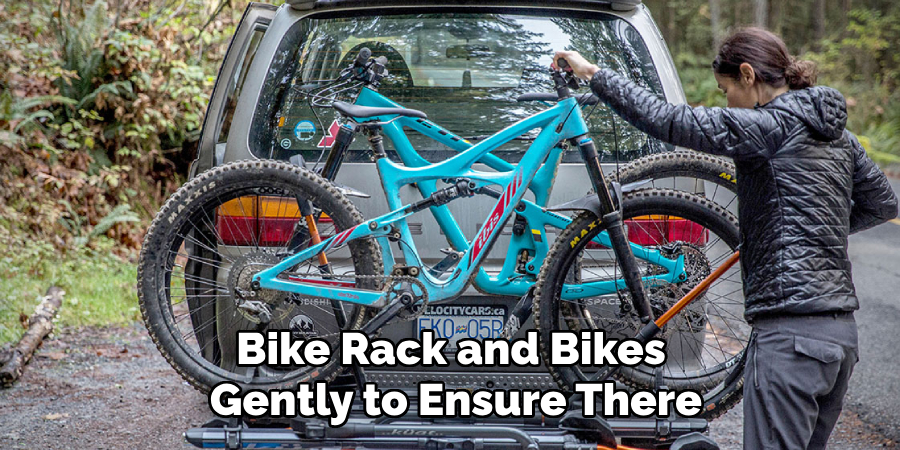
Following these steps, you can create a comprehensive security system for your hitch-mounted bike rack, keeping your bikes safe during transport or parking.
How to Lock Bike Rack: Lock a Trunk-Mounted Bike Rack
Securing a trunk-mounted bike rack properly is essential to protect your bikes and avoid theft. Follow these steps to create a reliable security system:
Step 1: Attach Security Straps
Start by using reinforced security straps to firmly secure the rack to the trunk of your vehicle. Ensure the straps are tightly fastened and resistant to shifting during transit, as this will provide a solid foundation for the rack’s stability.
Step 2: Use a Cable Lock
Next, use a durable cable lock to enhance security. Loop the cable through the bike rack and the vehicle’s frame. This is an added deterrent, making it more difficult for thieves to remove the rack or the bikes without the appropriate tools.
Step 3: Consider Adding Tamper-Proof Bolts
For an extra layer of protection, consider replacing the rack’s standard bolts with tamper-resistant ones. These specialized bolts require unique removal tools, reducing the risk of unauthorized access or theft.
By following these steps, you can improve the security of a trunk-mounted bike rack and protect your valuable equipment, whether your vehicle is parked or in transit.
How to Lock a Roof-Mounted Bike Rack
Step 1: Lock the Rack to the Roof Bars
Begin by using specialized locks designed for your roof rack system. Many roof-mounted bike racks come with built-in locking mechanisms or compatible lock accessories that secure the rack to the roof bars, ensuring that potential thieves cannot easily remove the rack.
Step 2: Secure the Bikes
Once the rack is locked, the next step is securing the bikes. Most roof-mounted racks feature integrated locks that allow you to lock the bike’s frame to the rack. For added security, you can use additional U-locks or cable locks to further secure the bike frame and wheels, minimizing the chances of theft.
Step 3: Check All Connections
Finally, it’s crucial to ensure that the roof bars are locked to your vehicle. Many roof bar systems provide locking mechanisms or options for tamper-resistant bolts. Double-check all connections, including the roof bars, rack, and bike locks, to verify that everything is secure before leaving your vehicle unattended. These precautions will enhance your bike’s security while using a roof-mounted bike rack.

Tips for Enhancing Bike Rack Security
Park Strategically
When parking your vehicle with a roof-mounted bike rack, choose well-lit and high-traffic areas whenever possible. These locations deter potential thieves, as they are less likely to act in spaces with increased visibility and activity.
Layer Security
Using multiple locks adds an extra layer of protection for your bikes. Consider employing U-locks, cable locks, or chains to secure various bike parts, including the frame and wheels. By layering your security measures, you make it more difficult for any single lock to be compromised.
Invest in Quality Locks
It’s worth investing in high-quality, tamper-proof locks from reputable brands. These locks often feature advanced mechanisms that are resistant to picking or cutting, significantly improving the security of your bikes. Look for locks with good reviews and certifications for added peace of mind.
Regular Maintenance
Inspect your locks and straps for signs of wear and tear to ensure your security measures remain effective. Replace any damaged components immediately to prevent potential failures. Regular maintenance not only extends the lifespan of your equipment but also boosts the reliability of your bike rack security system.
Conclusion
Locking a bike rack is essential to prevent theft and ensure the safety of your bicycles. Understanding how to lock bike rack securely allows you to tailor your approach based on the type of bike rack and the environment you’re in. Investing in high-quality locks and using multiple layers of security can significantly reduce the risk of theft. Regular maintenance of your locks and straps ensures their reliability and extends their lifespan. Taking these proactive steps will give you peace of mind and help protect your bikes for years.
About
Safety Fic is a distinguished figure in the world of Diy design, with a decade of expertise creating innovative and sustainable Diy solutions. His professional focus lies in merging traditional craftsmanship with modern manufacturing techniques, fostering designs that are both practical and environmentally conscious. As the author of diy, Safety Fic delves into the art and science of Safety Fic-making, inspiring artisans and industry professionals alike.
Education RMIT University
(Melbourne, Australia) Associate Degree in Design (Safety Fic) Focus on sustainable design, industry-driven projects, and practical craftsmanship. Gained hands-on experience with traditional and digital manufacturing tools, such as CAD and CNC software.
Nottingham Trent University
(United Kingdom) Bachelor’s in diyfastly.com and Product Design (Honors) Specialized in product design with a focus on blending creativity with production techniques. Participated in industry projects, working with companies like John Lewis and Vitsoe to gain real-world insights.
Publications and Impact
In diy, Safety Fic his insights on indoor design processes, materials, and strategies for efficient production. His writing bridges the gap between artisan knowledge and modern industry needs, making it a must-read for both budding designers and seasoned professionals.
